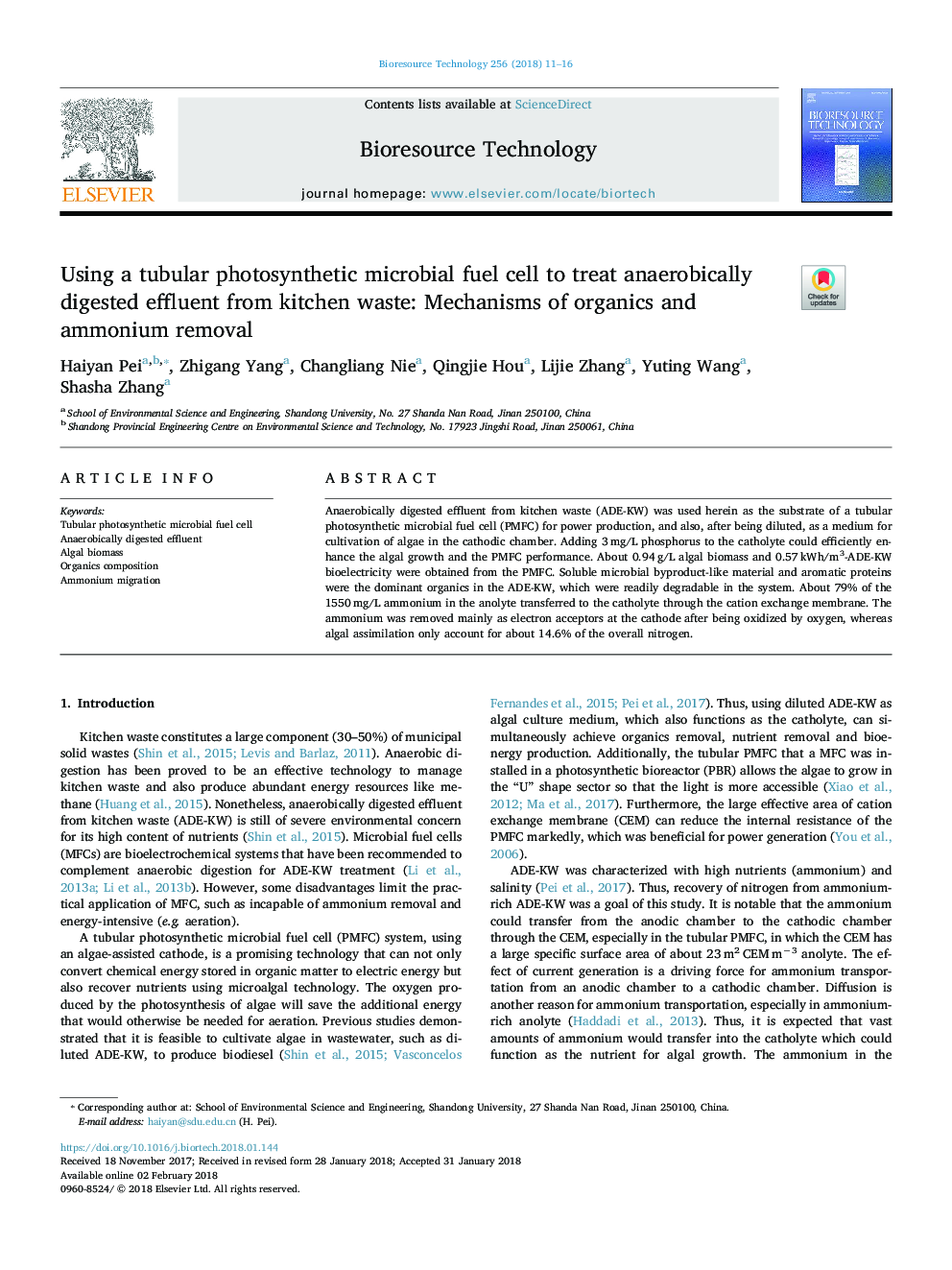| کد مقاله | کد نشریه | سال انتشار | مقاله انگلیسی | نسخه تمام متن |
|---|---|---|---|---|
| 7067841 | 1459887 | 2018 | 6 صفحه PDF | دانلود رایگان |
عنوان انگلیسی مقاله ISI
Using a tubular photosynthetic microbial fuel cell to treat anaerobically digested effluent from kitchen waste: Mechanisms of organics and ammonium removal
ترجمه فارسی عنوان
با استفاده از یک سلول سوختی میکروبی فتوسنتز سلولی برای درمان پساب هضم بی هوازی از زباله آشپزخانه: مکانیسم های حذف ارگانیسم ها و آمونیاک
دانلود مقاله + سفارش ترجمه
دانلود مقاله ISI انگلیسی
رایگان برای ایرانیان
موضوعات مرتبط
مهندسی و علوم پایه
مهندسی شیمی
تکنولوژی و شیمی فرآیندی
چکیده انگلیسی
Anaerobically digested effluent from kitchen waste (ADE-KW) was used herein as the substrate of a tubular photosynthetic microbial fuel cell (PMFC) for power production, and also, after being diluted, as a medium for cultivation of algae in the cathodic chamber. Adding 3â¯mg/L phosphorus to the catholyte could efficiently enhance the algal growth and the PMFC performance. About 0.94â¯g/L algal biomass and 0.57â¯kWh/m3-ADE-KW bioelectricity were obtained from the PMFC. Soluble microbial byproduct-like material and aromatic proteins were the dominant organics in the ADE-KW, which were readily degradable in the system. About 79% of the 1550â¯mg/L ammonium in the anolyte transferred to the catholyte through the cation exchange membrane. The ammonium was removed mainly as electron acceptors at the cathode after being oxidized by oxygen, whereas algal assimilation only account for about 14.6% of the overall nitrogen.
ناشر
Database: Elsevier - ScienceDirect (ساینس دایرکت)
Journal: Bioresource Technology - Volume 256, May 2018, Pages 11-16
Journal: Bioresource Technology - Volume 256, May 2018, Pages 11-16
نویسندگان
Haiyan Pei, Zhigang Yang, Changliang Nie, Qingjie Hou, Lijie Zhang, Yuting Wang, Shasha Zhang,
